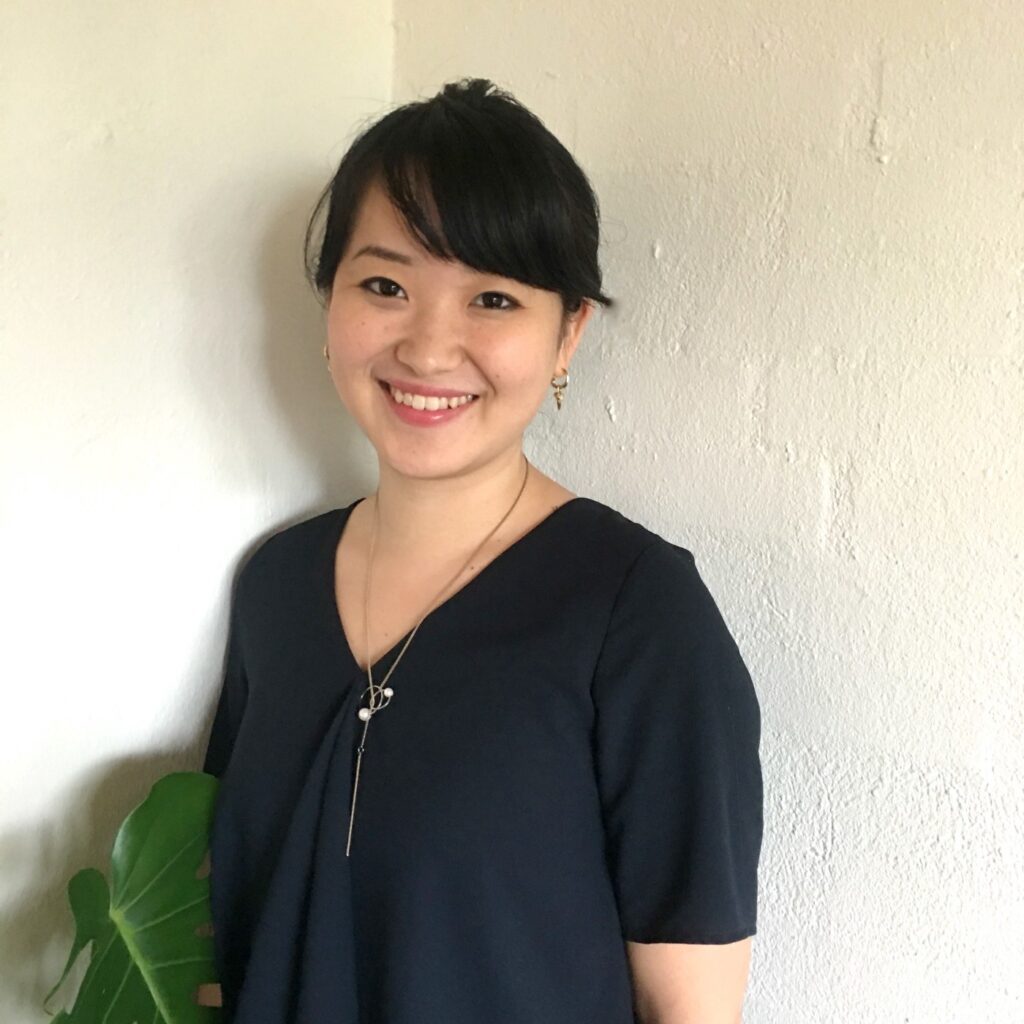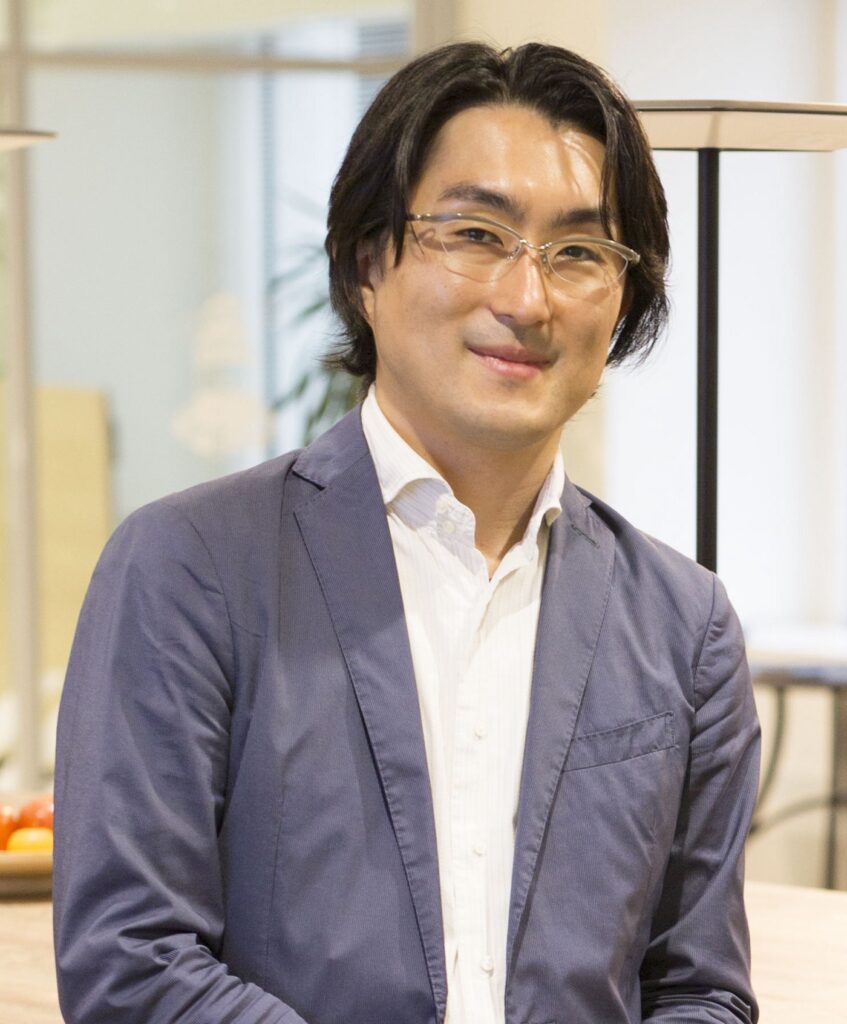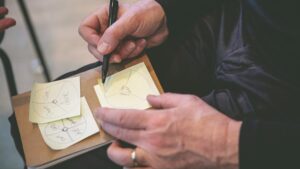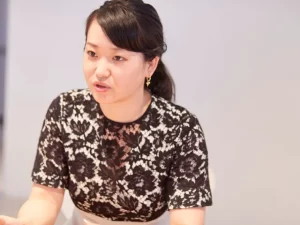What is it that makes Danes so Happy?

Denmark has been called the world’s happiest country. What Japan should learn from Denmark, the country of happiness?

Hiroshi Osonoi
Editor-in-Chief, WORK MILL (Sep. 2016‒Jun. 2018). Joined Canon in 1999. After working in printer business planning, he became responsible for in-house reforms in the Business Division IT Department. In 2012, he began working as a working style reform consultant at Microsoft Japan, then joined Okamura Corporation in 2014.

Aya Omoto
Born in 1985, Kyoto Prefecture. Spent two years studying in Canada and the United States during high school and university. Joined Grey Worldwide in 2008, and then was accepted into Kaospilot in 2012 as their first student from Japan. After graduating in 2015, she co-founded Laere.
Osonoi: I see your background is quite unique. After studying in Canada and the United States, what made you decide to study in Denmark?
Omoto: When I was studying in the States, there was a class at my university on advertising where we spent about two weeks visiting advertising agencies in European countries to discuss how the people live and what their cultural values are based on their publicity materials. That class gave me the chance to learn about how America sees Europe. As we learned about the background of all these different ads, I realized the national cultures and characters in Europe, where people valued culture and tradition, were similar to Japan. That was how I began to grow an interest in Europe. After finishing my studies in the States, I worked at an advertising agency in Japan. Outside the company, I helped coordinate the “TEDxTohoku” event. That’s where I met this Danish woman. As I talked with her, I realized she was proficient at incorporating multiple fields of study. She possessed business skills, artistic sense, creativity, and even marketing skills. What I didn’t know then was that in Denmark, it’s quite normal and expected of people to create results using the expertise of multiple fields. These people are called Π (pi) types. At the time, she was in Japan to get her master’s at a Japanese university. She told me she had also graduated from Kaospilot and said, “it’s the best education I’ve ever had.” So that made me want to go to Kaospilot as well, which is why I decided to study in Denmark.
In Denmark, you’ll fi nd ∏ type people in every company
Osonoi: Lately, Kaospilot is gradually becoming better known even in Japan, but you were the first Japanese citizen to be educated there. Wasn’t this a big leap for you without any predecessors to consult?
Omoto: Back then, when I told people at work that I was quitting to go study at Kaospilot, they said to me, “you’ll have a hard time finding a job again, considering it’s not Harvard or Stanford but a Danish school. Most people won’t be able to grasp what you’ve acquired.” And they were right. Unlike an MBA, I didn’t know what use it would be, and there was no guarantee it would give me a career. I was worried, but at the same time, I sensed that there was definitely something at Kaospilot. I decided to trust my instincts.
Osonoi: When you actually got to Denmark, how was it different from Japan? And from the US and Canada?
Omoto: It had some similarities with the United States and Canada, but one big difference I noticed was how people build a consensus. I think it comes from the size of these countries. The United States and Canada are huge, but Denmark is only about the size of Kyushu, with a population of five and a half million. But because it’s a small country, it’s possible to build a consensus through cooperating across sectors, fusing education and business, and by sharing a common understanding. Denmark is compatible with Japan in many ways- its humbleness, respect for craftsmanship, and love towards nature, but their approach to education is very different. In Denmark, children’s views are respected, and they are given choices from a young age. This helps them develop their identity and sense of responsibility.
Children are treated as part of society
Osonoi: When I was in Denmark just recently, I was also struck by the differences in education. I felt that the reason Japanese pupils can’t act as individuals during their primary and secondary education is that they’re treated as immature beings.
Omoto: Denmark considers children to be a part of society; so when, for example, they were building Dokk1, they interviewed children to ask them what a “library of the future” meant to them and created prototypes based on it. Children are not seen as immature, but as citizens with their own ideas. That’s the big difference between Japan and Denmark.
Osonoi: So, when you took classes at Kaospilot, you were with students who were brought up with those values. Was there a difference?
Omoto: It felt completely different. The biggest difference I found was during the entrance exam workshop when we made proposals for a company’s CSR issue. There was a question concerning ethical values, but I’d never considered my own ethical values in my life up to that point or talked to anyone about them. However, Danes think and talk since childhood about what they feel when there are no right answers. The same applies to politics and religion. In Denmark, politicians visit schools to give talks even before the pupils are old enough to vote. They’re trained from an early age on how to decide where to vote.
Osonoi: If you did something similar in Japan, many people would view it as a process for selecting people with particular ideas. It would be quite difficult to draw out individual opinions.
Omoto: When you’re in Japan, it’s natural to avoid asserting your opinion. But I think we need to consider why that is so. Denmark invests in an educational environment where individual opinions are respected and people can live without worry. This is how people there manage to grow. As a result, the level of happiness increases. This environment helps people develop the confidence and willpower to change the existing system, meaning its people are always ready to assess how they feel about the country’s structure. Goals are set, but plans are not.
Osonoi: I’ve always wondered whether Danes even try to come up with a “correct” answer. Personally, I think one of the characteristics of the Japanese is that they always do. Talking with you made me realize that Danes don’t worry about finding the right answer, but are more interested in the debate. If there are no right answers, they’ll just make one.
Omoto: Europe is home to people with all sorts of backgrounds and values, so there’s an underlying idea that there are many ways of looking at things and many truths. The same applies to Denmark. Even though there will be conflicting values, everyone is aware of how important it is to figure out how to create the future together. This is why in Denmark, national goals are clearly presented with bold, substantial themes that inspire people.
Osonoi: The state sets visions and agendas.
Omoto: Goals are set, but the “how” is left up to you. For example, Japan’s educational guidelines set things out in specific detail right down to the “how.” But in Denmark, the goals are set but the teaching methods are left up to the teachers. And, rather than trying to teach everything themselves, it’s not uncommon for teachers to call in specialists or for the students to hunt for specialists themselves. Schools are places where the creativity of both teachers and students can blossom. They create a democratic situation whereas many as possible can feel comfortable and satisfied, while at the same time incorporating a diverse range of flexible values that leaves some room around the edges. Of course, not everything about it is perfect though.
Japan can benefit from a Denmark-style decision-making process
There is the downside that changes in the plan are to be expected. For example, when they built Dokk1, the external walls were ruined by the sea breeze, so they had to redo them from scratch. In that respect, the Japanese way in which precise, detailed plans are created to accomplish major projects can be more suitable.
Osonoi: So Denmark’s ways aren’t suited for everything, are they?
Omoto: That’s why I personally think Japan and Denmark fit well together. Denmark, which can transform uncertainty into creativity, is great at coming up with new concepts and testing them, while Japan, which follows regulations and plans for everything, is good at carrying out large projects.
Osonoi: You have a good point. Denmark is drawing attention to being the “world’s happiest country.” What elements of Denmark should we import to increase the level of happiness in Japan?
Omoto: There are both external and internal factors behind Denmark’s high happiness level. External factors include an environment where people don’t need to worry about certain expenses like medical costs. But this concerns national strategies, so it’s not so easy to imitate. What we need to incorporate are the internal factors. Japan could take some pointers on how to find happiness in one’s own life. This is about customs and habits. For example, Danes have a rather good rule about how to use time to discover daily happiness. Work eight hours; rest eight hours. Danes are great at ensuring they get this “rest time.”
Osonoi: They do appear to have fixed routines.
Omoto: In Japan, people are punctual when it comes to meeting with others, but they’re not so good about controlling their own time. They put the group ahead of the individual. By setting up rules on how to use your own time -while it won’t directly lead to happiness-it will create time to relax and time to educate yourself. What’s important when making time for yourself is not to use time cleverly, but to know how you want to spend your time. This will guide you to your own answer, no matter what others tell you. You’ll be able to make constructive decisions instead of groping for the right answer for your family or your workplace. This way, your personal time will not be lost to the typical Japanese “it can’t be helped” reasoning.
Osonoi: Japan prefers to avoid uncertainty, but we could learn a lot from the Danish decision-making process.
Omoto: At the moment, I’m the go-between for Denmark and Japan at Laere, but I’m not saying that it’s a good idea to just copy Denmark’s ideas and import them all wholesale. The important thing is to get inspiration from lots of different countries and use it to create Japan’s unique style of working and living. While drawing from Denmark, I believe going to other countries around the world and obtaining inspiration from them is the shortcut to making Japan a happy country.
The original article “What Japan should learn from Denmark, the country of happiness” is a part of the WORK MILL with Forbes JAPAN Issue 2 -The Danish way ©WORK MILL







